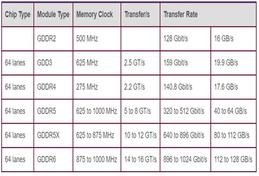EPROM: Advantages and Disadvantages Explained
Explore the benefits and drawbacks of EPROM memory, including its non-volatility, reprogrammability, and limitations like UV erasure and high power consumption.
Advertisement
Explore the benefits and drawbacks of EPROM memory, including its non-volatility, reprogrammability, and limitations like UV erasure and high power consumption.
Explore key electronic terms like BJT, FET, capacitors, inductors, and transducers. This guide provides concise definitions and references for each term.

Explore the distinctions between ferroelectric and piezoelectric materials, including their properties, effects, and applications in various technologies.

Explore the pros and cons of flash memory, a non-volatile storage used in USB drives and SSDs. Understand its speed, durability, limitations, and applications.
Explore the benefits and drawbacks of flexible batteries, including their shape adaptability and limitations in energy density and cost.
Convert between JK, SR, D, and T flip-flops using conversion equations. Implement desired flip-flop behavior with available types.

Explore the advantages and disadvantages of load cells and piezoresistive force sensors for measuring force.

A comparison of GDDR memory versions (GDDR1-GDDR6) covering their key features, speeds, and applications in graphics cards and other high-performance systems.

Explore the key differences between GDDR and DDR memory, including intended use, performance, bandwidth, and applications. Learn which type is right for your needs.

Explore the key differences between GDDR and HBM memory, including their architecture, performance, power efficiency, and cost. GDDR6 and HBM2 examples are used.

A comparison of GDDR5, GDDR5X, and GDDR6 memory, highlighting their key features, specifications, and applications in graphics cards and other high-performance systems.
Explore the pros and cons of graphene, a revolutionary 2D material, covering its strength, conductivity, challenges in production, and environmental concerns.

Explore the advantages and disadvantages of the Grove interface, including its fail-safe design, wide range of modules, and limitations such as lack of SPI support.

Interface a GSR sensor with Arduino using provided code and schematic. Learn about GSR sensors, their applications, and how to measure skin conductance.
A detailed comparison of NVIDIA's GTX 1080 and Titan V GPUs, covering specifications, architecture, memory, and intended use.

Explore the pros and cons of gyroscopes, from MEMS to mechanical, and their applications in navigation, gaming, and more.

Explore the characteristics and differences between Unipolar, Bipolar, Omnipolar, and Linear Hall Effect sensor variants.

Explore haptic sensor fundamentals, including linear resonant actuators (LRAs) and eccentric rotating mass (ERM) vibration motors. Learn the principles behind these technologies.

Explore the benefits and drawbacks of HBM (High Bandwidth Memory). Learn about its features, performance, and limitations.

Explore the key differences between HBM1, HBM2, and HBM3 memory technologies, including speed, bandwidth, capacity, and power consumption.
Advertisement